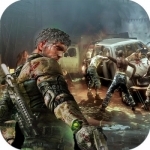
Rooms - Your IRC Chat Client
Social Networking and Utilities
App
Chatting with the whole world has never been so easy. Just start Rooms and you’re connected -...

Serato Remote Mini
Music and Utilities
App
The Serato Remote Mini is a special version of the Serato Remote, designed specifically for use with...

Extreme Shooting 3D Adventure
Games
App
Are you ready for most exciting army game the Extreme shooting 3D adventure? You love to play this...

CallsApp - International Calls Free & Cheap
Social Networking and Utilities
App
Cheap & Free International Calls is what CALLSAPP is about - Cheap International Calls by CallsApp...

OfficeSuite PRO Mobile Office
Business and Productivity
App
OfficeSuite is the best way to work with office files on iPhone and iPad. With a familiar...

WPS Office
Business and Utilities
App
Rated as ”Best Office App for Mobile” ”the Easiest Word Processor on Phone” by Millions...

Subscription for Coach's Eye Premium Users
Sports and Health & Fitness
App
IMPORTANT NOTE: This IS NOT a free consumer app. This special version of Coach's Eye® is intended...

Paris' Best Restaurants - Chefshout
Food & Drink and Travel
App
Almost as good as calling up the chef and asking them where to eat in their town. Michelin Star...

Fave (previously Groupon)
Food & Drink and Lifestyle
App
If you’re in Malaysia, Indonesia, and Singapore, Groupon is now Fave! What’s Fave? Fave is a...

Geographical & Archive
Travel and Magazines & Newspapers
App
** RGS members wanting free app access will need to download the separate "Geographical Magazine"...